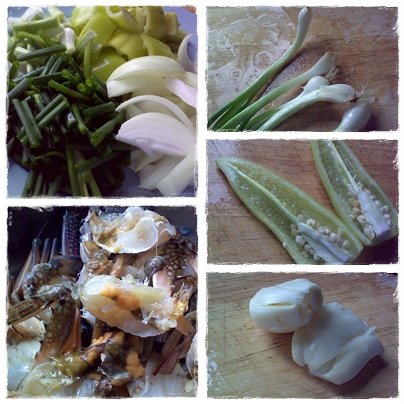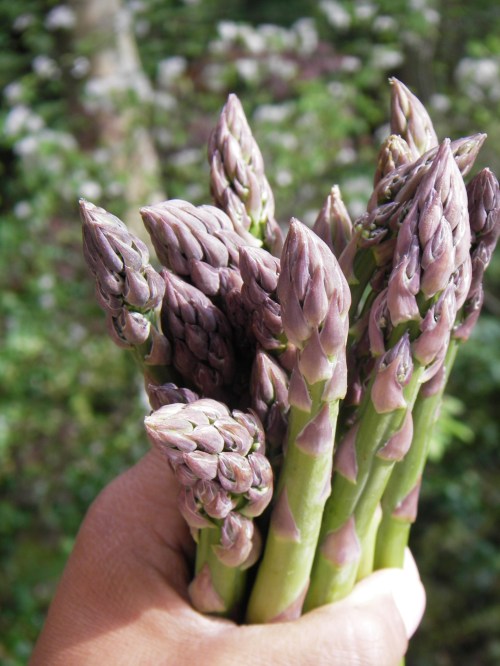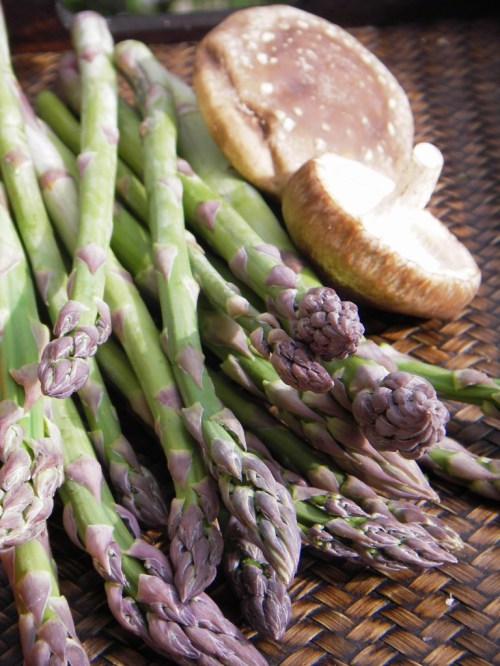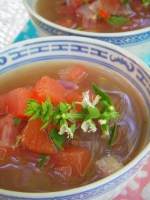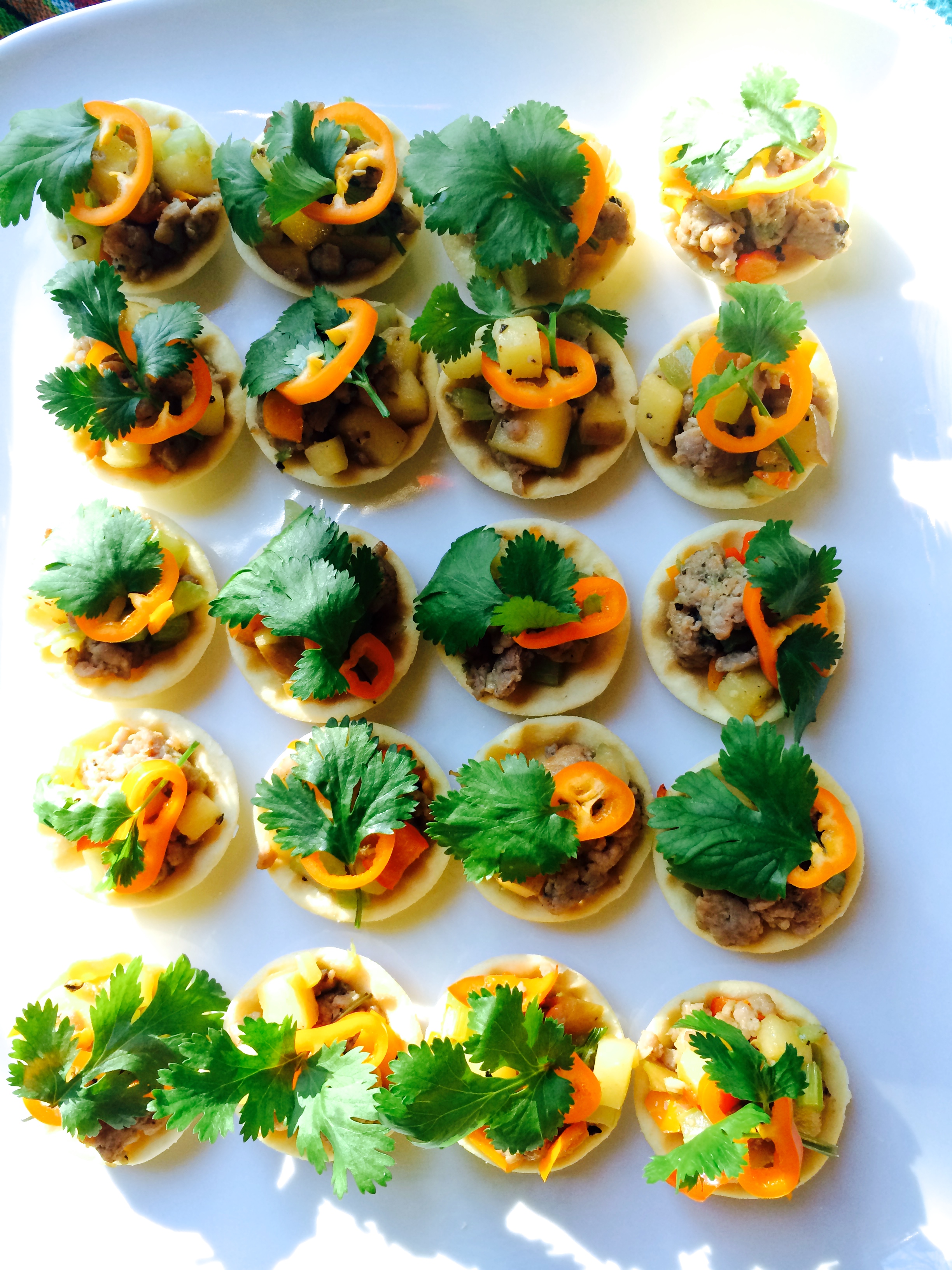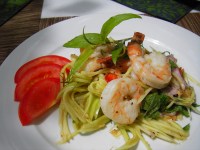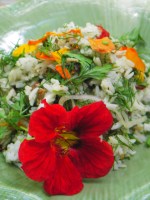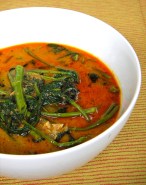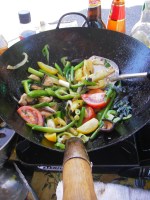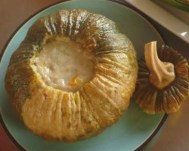Eat Like a Local
Papa Seafood Restaurant, Laem Sing, Phuket, Thailand
It was less than a month ago that I was at Laem Sing, Phuket, soaking up the warm sunshine before leaving for Seattle. Laem Sing is my favorite beach for getting away for a half day—or all day—to just hang out on the beach with nature and good Phuket seafood. Typically one should visit early enough to choose the best location among the sun loungers that are lined up along the beach. The sun lounger will cost 50 to 100 baht ($2 to $3), which is paid to the owner of the restaurant in front of which the sun lounger sets. It also means that you should order food and drink from that restaurant as well. That’s how I came to know Papa Seafood Restaurant, as I make sure to visit Laem Sing each year. This is a private beach but it is open to the public. It is located on the northwest coast of Phuket on Millionaire Road between Kamala and Surin Beaches.
Pay for parking (40 baht) near the road, then walk down the hill to this quiet beach.
At Papa Seafood Restaurant, the seafood is purchased fresh each day and the menu is full of mouth-watering dishes—from local Thai seafood favorites to a few western dishes for those who prefer western comfort food such as sandwiches. The drink menu has a long list of tropical smoothies and other beverages that can keep you hydrated throughout the day.
As my eye glanced over the menu, I began to wonder about the possibility of taping the cooking at the restaurant to share with my students and Thai foods fans. Never afraid to ask, I found that the cook didn’t mind me taking photographs and video. I hope that you will enjoy the video on Stir-fried Blue Crab with Black Pepper recipe and that it will help you to duplicate this dish at home. If you get a chance to visit Phuket, please check out Laem Sing Beach and stop by Papa Seafood Restaurant. From Laem Sing Beach to your kitchen!
Stir-Fried Blue Crab with Black Pepper Recipe
Phad Phu Ma Kub Prik Thai Dum
ผัดปูม้ากับพริกไทยดำ
I grew up in the southern region of Thailand eating two kinds of crab: a rice-field crab (Phu Dum) and blue crab (Phu Ma), which is the most common crab caught in the Indian ocean. My family’s favorite ways to prepare the blue crab are either to steam it and serve it with a lime-garlic dipping sauce, or to stir-fry the crab with black pepper and green onion. Blue crab is so sweet and delicate in flavor, the cooking is best when it is simple with few ingredients. I love stir-fried blue crab with black pepper and the contrast of the sweet, juicy, fresh crab and the excitement of crushed black pepper. Kin Hai Aroy! Bon Appetite!
Serves: 2
Cooking Time: 5 to 7 minutes
3 tablespoons cooking oil 2 tablespoons garlic 1/2 onion, sliced 4 Thai chilies, cut in half 2 blue crabs, cleaned and cut into large pieces 2 tablespoons black peppercorns, crushed 2 teaspoons oyster sauce 1 teaspoon sugar 2 teaspoons soy sauce 1/2 cup water or more as needed 1/2 tomato, sliced 1/2 cup Chinese celery and green onions cut into one inch length Heat the wok on high heat and stir in onion and chili; stir back and forth until fragrant, about 30 seconds. Then stir in blue crab and let it cook for 2 minutes. Stir in black pepper, oyster sauce, sugar and soy sauce. Stir well, then add water and let it cook until the crab is completely pink in color and the crab meat is opaque, not translucent. It takes about 3 to 5 minutes for the crab meat to cook. Add more water in between to make a good amount of sauce but not too watery. Last, stir in tomato, Chinese celery and green onion and continue stirring for 30 seconds. Serve right away with steamed jasmine rice.Credit: Papa Seafood Restaurant
Laem Sing, Phuket, Thailand
© 2011 Pranee Khruasanit Halvorsen I Love Thai cooking Pranee teaches Thai Cooking classes in the Seattle area. Her website is: I Love Thai cooking.com . Related articles- ~Thai Spicy Stir-fried Seafood with Yardlong Bean Recipe~ (ilovethaicooking.wordpress.com)
- Master Crab (erm… Crap) Seafood Restaurant (ladygalaxie.wordpress.com)
- Eating Like a Local: Kan Eng @ Pier (ilovethaicooking.wordpress.com)




























